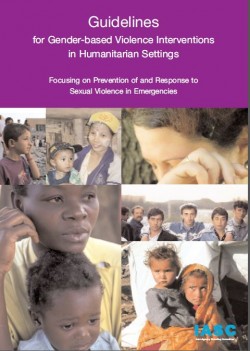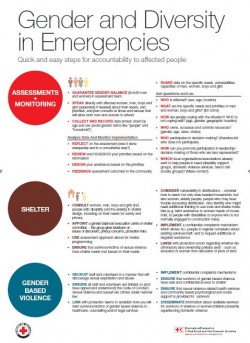Purpose
The primary purpose of these guidelines is to enable humanitarian actors and communities to plan, establish, and coordinate a set of minimum multi-sectoral interventions to prevent and respond to sexual violence during the early phase of an emergency.
Overview
- Three sets of activities are included in the guidelines: 1) overview of activities to be undertaken in the preparedness phase; 2) detailed implementation of minimum prevention and response during the early stages of the emergency; and 3) overview of comprehensive action to be taken in more stabilised phases and during recovery and rehabilitation.
- The guidelines recommend specific key interventions for preventing and responding to gender-based violence in humanitarian emergencies. The matrix in Chapter 3 is an overview of recommended key interventions for preventing and responding to sexual violence, organised by the three general phases of emergencies: emergency preparedness; early phase (minimum prevention and response); and stabilised phase (comprehensive prevention and response).
- The guideline also includes action sheets for minimum prevention and response: the action sheets are organised by sectors and cross-cutting functions. There are five cross-cutting functions that require action from multiple organisations and sectors. These are: coordination; assessment and monitoring; protection; human resources; and information education communication. In addition to the cross-cutting functions, there are specific interventions organised by sector: protection; water and sanitation; food security and nutrition; shelter and site planning and non-food items; health and community services; and education.
Usage: Guidance for project implementation
Audiences: Technical staff; Gender and diversity practitioners
Reference: Inter-Agency Standing Committee (2005). Guidelines for Gender-Based Violence Interventions in Humanitarian Settings: Focusing on Prevention of and Response to Sexual Violence in Emergencies. Global Protection Cluster. Pp. 1-342. Available from: http://www.europarl.europa.eu/meetdocs/2014_2019/documents/femm/dv/gbv_toolkit_book_01_20_2015_/gbv_toolkit_book_01_20_2015_en.pdf [Accessed: 18th July 2016].
![]()



